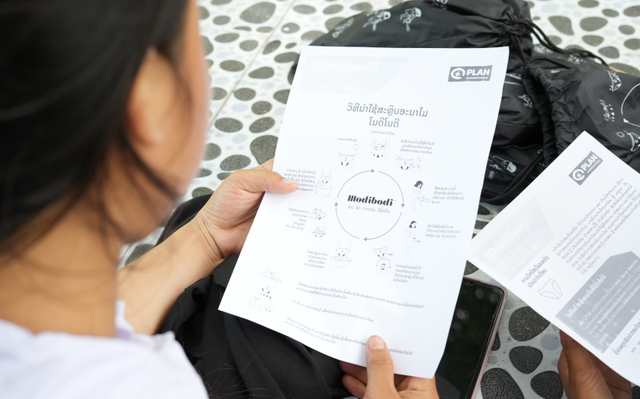Starke Blutung, schlechte Laune, kurze Atempause, extrem hohe Libido. Willkommen zu fünf Minuten im Körper einer menstruierenden Frau. Wir wollen hier nicht übertreiben, die hormonellen Schwankungen während der Menstruation können sich wie ein emotionaler Schleudertrauma anfühlen und alles beeinflussen, von unserem Appetit bis hin zu unserem Denkprozess. Aber was wäre, wenn wir Ihnen sagen würden, dass es eine Möglichkeit gibt, die Kraft Ihrer Hormone zum Besseren zu nutzen, anstatt ihnen zu erliegen? Das nennt man Zyklussynchronisierung und erregt die Aufmerksamkeit des Internets. Hier erfahren Sie, worum es geht.
Was ist Zyklussynchronisierung?
Bei der Zyklussynchronisation passen Sie Ihre Lebensgewohnheiten wie Ernährung oder Trainingsroutine an die jeweilige Phase Ihres Menstruationszyklus an. Dadurch können Sie Ihren hormonellen Bedarf besser einschätzen und Ihren Zyklus und sich selbst besser steuern.
Betrachten Sie es als eine Art Wetter-Tracker für Ihre Hormone; ein Mittel, um zu überprüfen, wie sich Ihr Körper anfühlt, und sich entsprechend vorzubereiten, damit Sie Ihren Tag bewältigen können, bevor Sie in einen emotionalen Feuersturm geraten, den Sie nicht wollten.
Was ist die Wissenschaft dahinter?
Wir wissen, dass Hormone während unseres monatlichen Zyklus schwanken und die Reaktion unseres Körpers auf eine Vielzahl von Faktoren beeinflussen, von Appetit bis Libido. Eine frühe Studie ging jedoch noch einen Schritt weiter und zeichnete die verschiedenen Zeitpunkte auf, in denen sich Stimmung und Körper von Frauen in den verschiedenen Phasen ihres Menstruationszyklus verändern. In der Studie berichteten Frauen von einem höheren Wohlbefinden und Selbstwertgefühl in der Zyklusmitte sowie von verstärkten Angst-, Depressions- und Feindseligkeitsgefühlen vor ihrer Periode. Diese Forschung inspirierte die Ernährungswissenschaftlerin Alisa Vitti HHC, AADP, die den Begriff prägte und als Marke eintragen ließ.
Obwohl die wissenschaftliche Forschung die Zyklussynchronisierung derzeit nicht unterstützt, erfreut sich die Idee bei Frauen und einigen medizinischen Fachkräften zunehmender Beliebtheit. Sie berichten von überwältigenden positiven Veränderungen seit der Anwendung dieser Theorie.
Warum es beliebt ist.
Die meisten von uns kennen den Gedanken, sich während oder vor der Periode nicht hundertprozentig zu fühlen. Daher klingt jede nicht-invasive Maßnahme, die uns dabei helfen kann, uns besser zu fühlen oder zumindest ein gewisses Gefühl der Kontrolle zu behalten, während sich unser Körper verändert, ziemlich gut, insbesondere wenn Sie zu Müdigkeit, polyzystischem Ovarialsyndrom (PCOS), Erschöpfung, Gewichtsschwankungen und geringer Libido neigen.
So fangen Sie an.
Der Schlüssel zur Zyklussynchronisierung liegt darin, Ihren Zyklus und seine vier Hauptphasen (Follikel-, Ovulations-, Luteal- und Menstruationsphase) zu verstehen und zu wissen, wie Sie sich in jeder Phase fühlen. So werden Perioden-Apps zu Ihrem neuen besten Freund.
Beginnen Sie damit, Ihren Zyklus jeden Kalendermonat zu verfolgen und Ihre Stimmung sowie alle körperlichen Veränderungen entsprechend zu dokumentieren. Apps wie Clue und Kindara verfügen über eine integrierte Zyklussynchronisationstheorie, sodass Sie Ihre Menstruationsdaten verstehen, Muster erkennen (z. B. wann Ihre Energie am niedrigsten ist) und Ihren Lebensstil bei Bedarf anpassen können.
Hier finden Sie eine allgemeine Richtlinie dazu, wie Sie Ihren Lebensstil anpassen können, wenn Sie mit der Zyklussynchronisierung beginnen. (Pssst: Bei der Zyklussynchronisierung wird Ihr Menstruationszyklus als vierte Phase betrachtet.)
Die 4 Schlüsselphasen
Phase: Follikuläre
Gefühl: Kein prickelnder Sex. Wenig Energie.
Tun: Verzehr von Kimchi und fermentierten Lebensmitteln zur Stabilisierung des Östrogenspiegels. Leichte körperliche Betätigung.
Tragen: Modibodi Swim für die Zeit im Pool, plus unsere feuchtigkeitsableitende OG-Unterwäsche für den täglichen Schutz und leichte Übungen.
Phase: Ovulation
Gefühl: Östrogen ist durch die Decke gegangen. Ich brauche Sex. Jetzt
Tun: Essen Sie entzündungshemmende Nahrungsmittel, tragen Sie Verhütungsmittel oder versuchen Sie, ein Baby zu bekommen.
Tragen: Gehen Sie ohne Unterwäsche durchs Haus oder tragen Sie unsere klassischefeuchtigkeitsableitende Unterwäsche, perfekt für den Alltag und bei leichtem Ausfluss.
Phase: Luteal
Gefühl: Hoher Östrogen- und Progesteronspiegel. Schwierigkeiten beim Höhepunkt.
Tun: Viel Vorspiel. Krafttraining. Essen Sie Blattgemüse und magnesiumreiche Lebensmittel.
Tragen: Modibodi x PUMA nahtloser Tanga . Keine sichtbaren Spuren. Perfekt für die Kniebeuge.
Phase: Menstruation
Gefühl: Geringe Energie. Starke Blutungen. Krämpfe, hoher Östrogenspiegel. Gesteigerte Libido.
Tun: Leichtes Dehnen und Zeit auf der Couch. Vermeiden Sie salzige, schwere Speisen.
Getragen: Modibodi Sensual Hi Waist Bikini , perfekt zum Schlafen.
Es kann eine Weile dauern, bis man sich mit der Zyklussynchronisation vertraut gemacht hat. Sobald man sich aber die Zeit nimmt, seinen Zyklus zu verstehen, können kleine Anpassungen des Lebensstils den Unterschied zwischen einem mittelmäßigen und einem zauberhaften Gefühl ausmachen. Weitere Informationen zu Menstruations- und Eierstockzyklen finden Sie in diesenBlogs .
Haftungsausschluss: Die Inhalte dieser Website stellen keinen medizinischen Rat dar und dienen weder der Diagnose, Behandlung, Heilung oder Vorbeugung von Krankheiten noch zu therapeutischen Zwecken oder als Ersatz für die Beratung durch Ihren Arzt. Konsultieren Sie vor der Anwendung immer einen Arzt oder eine medizinische Fachkraft.







